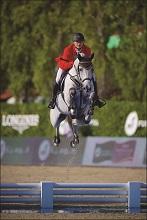
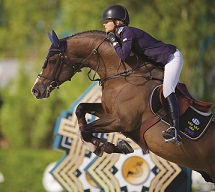
Equine competition has a long and storied tradition rooted in the necessity of man’s relationship with the horse. These days, though, the sport flourishes, thanks to the proficiency and experience of its athletes and devotees –including the event organizers – and the sophistication of today’s facilities.
Horses First
By nature, equestrian events require that athletes have access to horses, and those horses are the primary focus for event planning, says Will Connell, director of sport for the United States Equestrian Federation (USEF), the sport’s national governing body.
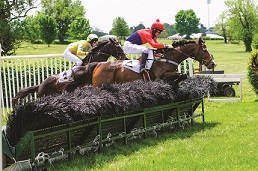
New technology and a growing expertise, however, mean that equestrian sports can be held potentially anywhere, which has the added benefit of allowing new audiences exposure to these sports for the first time.
“The technology around temporary stabling is outstanding,” added Connell. “The London venue in Greenwich, right in the middle of the city, was totally temporary, which of course created some challenges, but it was fantastic because people who had never watched horse sport before got to watch it.”
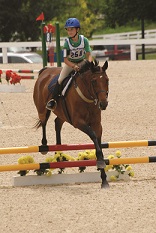
Fortunately, America is also home to many exceptional equestrian facilities that already possess that expertise and technology. The Kentucky Horse Park is one of those facilities, offering both outstanding competition venues as well as a look into equestrian culture and history.
“If you have a large equine event and you need not just rings, but stall space, muck removal, all the necessary services provided to competitors and their riders, Kentucky Horse Park has the facilities to do that,” says Lisa Jackson, a spokeswoman for Kentucky Horse Park. “Plus, we have the tourist attractions, such as the International Museum of the Horse, the world’s largest horse museum, which is an affiliate of the Smithsonian.”
Throughout the summer, Kentucky Horse Park hosts some of the world’s most prestigious equestrian events, including the Rolex Kentucky Three-Day Event that draws Olympic athletes to the facility’s renowned cross country course.
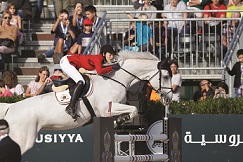
Greater exposure to equestrian events is one way the sport is remaining strong, but another crucial step is increasing opportunities to ride.
“Fewer people have access to horses these days, and people who want to ride have to really want to ride,” says Shelley Mann, marketing and communications director for the U.S. Pony Clubs, which focuses on fostering the next generation of riders. “We’ve seen growth in places that have established riding centers that give new riders the opportunity to experience riding without having to own a horse.”
America’s many exceptional facilities achieve two crucial ends for equestrian sports: not only do they offer the public the opportunity to experience horse events, but they also provide riders the chance to get involved, and stay involved, in equestrian events.
Senator Bob Martin Eastern Agricultural Center in Martin County, North Carolina, provides an ideal example. The facility, which hosts as many as 48 equestrian and rodeo events each year, is a favorite of event planners for its championship level qualities.
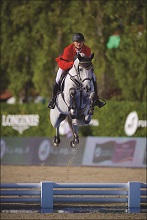
Recognizing these specialized needs means more successful events, and also healthier horses with fewer injuries. But that’s not all this facility has to offer. In addition to almost 500 stalls and a 100,000 square-foot heated coliseum, Senator Bob Martin Ag Center offers heated showers for the horses.
Choosing a facility that, like the Senator Bob Martin Ag Center, specializes in hosting a wide variety of events, or a facility that specializes in a few specific events is a choice that event owners also face. Fortunately, exceptional facilities with a wide range of expertise can be found all across America.
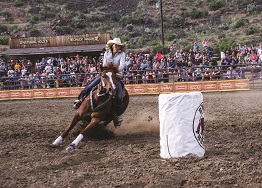
Extraco is a 50-acre facility with more than 700 stalls and not only hosts events, but creates them as well. One of those events is Elite Barrel Racing, which allows youth barrel racers to compete for significant prize money and experience a professional athletic experience.
“Elite Barrel Racing happens twice a year and grows in participants with every event,” says Charva Ingram, vice president, marketing & sponsorship development, Extraco Events Center. “It’s a whole range of athletes, too, some experienced and some who are as young as five to seven years old.”
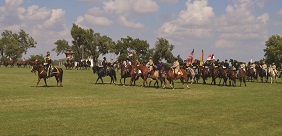 Preserving Tradition
Preserving Tradition
Horses have a long history as competitors, but for perhaps even longer, they were soldiers and some equestrian events today exist to celebrate that tradition. The U.S. Cavalry Association (USCA) is an organization dedicated to preserving the traditions of U.S. Cavalry and sponsor of the National Cavalry Competition (NCC), and recently the USCA chose a permanent home for its competition.
“Previously, the NCC toured various forts across the country,” says Heather Brothers, assistant director, El Reno Convention and Visitors Bureau. “But when they came to the Fort Reno, they said we made whatever they needed happen. The Fort itself is also stunning, with amazing views and expansive parade grounds. After that, they said they would like to come back, and then they decided to move their offices and library there.”
Some areas are just synonymous with equestrian, and Saratoga, New York, is one of them. In addition to its phenomenally successful Travers Stakes horse race, other key equestrian events fill the books and facilities throughout the season.
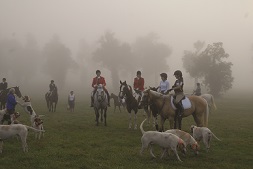
Horse shows are a profitable tradition for New York as well: according to a 2015 news release from the Capital Fund of Saratoga County, Inc., operators of the Saratoga Springs Horse Show, “Horse shows in New York are a major source of income for many. The economic impact from horse shows in NYS (480 in 2011) was over $335 million of direct and indirect influence.”[1]
Old Tradition Begets New
Ranking first in America for average farm or ranch size, Wyoming has earned its nickname, “The Cowboy State,” with a long history of agriculture, particularly cattle ranching, a history that caused another tradition to grow alongside it: rodeo. [2]
All of this ties nicely into the long-thriving Wyoming horse culture, says Mary Silvernell, executive director, Campbell County Convention and Visitors Bureau. “We have such a strong ranch and agricultural community, and it continues with the 4H, which is very strong here. I don’t think it’s going anywhere anytime soon.”

To meet the ever-growing need for equestrian and rodeo event space, Campbell County had to build two facilities: first the 1,000-plus acre CAM-PLEX, with thousands of stalls both permanent and temporary, and second the Southern Campbell County Agriculture Complex, which offers one of the largest event spaces in the region.
Amarillo, Texas, is another location with intrinsic ties to equestrian and rodeo events and keeping those roots strong is key to keeping the events strong, too, says Dan Quandt, vice president, Amarillo Convention & Visitor Council. “The Texas Panhandle owes its existence to ranching and farming. We’re not just host of many of these events; we’re their headquarters.”
Wrangling Rodeo
Although many communities like Gillette in Campbell County, Wyoming, retain strong ranching and equestrian roots, rodeo organizations also understand that connections between youth and rodeo must be fostered to ensure those ties continue to bind.
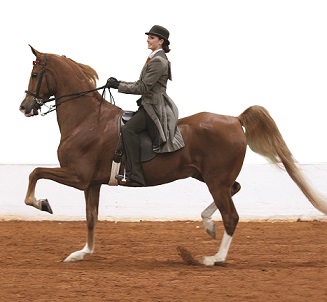 The PRCA, for example, manages several initiatives, including rodeo camp, permit subsidies and sponsorship, which offer opportunities and financial support for all youth rodeo athletes. And Gillette and the CAM-PLEX facility are once again hosting some of those youth rodeo athletes at the 2016 and 2017 National High School Finals Rodeo, an event that draws athletes from the U.S., Canada and Australia.
The PRCA, for example, manages several initiatives, including rodeo camp, permit subsidies and sponsorship, which offer opportunities and financial support for all youth rodeo athletes. And Gillette and the CAM-PLEX facility are once again hosting some of those youth rodeo athletes at the 2016 and 2017 National High School Finals Rodeo, an event that draws athletes from the U.S., Canada and Australia.
Opportunity to compete is a major factor in keeping the next rodeo generation engaged, and another event that takes that challenge by the horns is the International Finals Youth Rodeo (IFYR), in Shawnee, Oklahoma. Created by the Shawnee Civic & Cultural Development Authority and held at the Heart of Oklahoma Expo Center, the IFYR provides high school rodeo athletes the chance to participate in a professional-level rodeo. In order to make the 1,000-plus athletes’ event a success, Michael Jackson, operations manager of the Heart of OK Expo Center, and his team deliver expertise and dedicated volunteers.
“Volunteers for our International Finals Youth Rodeo is very vital,” says Jackson. “Without them it would be impossible to put on. Dirt is also vital for the horse-related events. It can either make or break an event and all of them like the ground different, so it is important to have someone with knowledge of all different types of horse-related events to satisfy the customer.”
Equestrian Sports: The Next Generation
Just as Pony Club is an entry point for dressage, show jumping and eventing, college rodeo is one of the sport’s training grounds for the next generation of professionals. In fact, according to Sarah Neely, director of public relations and administration for the National Intercollegiate Rodeo Association (NIRA), participation is showing no signs of bucking.
“Over the last several decades, we have had a steady 130 or more school members, more than 3,500 athlete members and 110 college rodeos with 250,000 attendees every year,” says Neely. “If we take our eye off the ball, we will lose our numbers because the market is so saturated with so many wonderful sports,” says Neely.
[1] http://www.saratogaspringshorseshow.com/sites/sportsdestinations.com/files/8114/2380/2530/saratoga_horse_show_wk_3_press_release__rev_0.pdf
[2] http://www.wyfb.org/education/ag-facts

